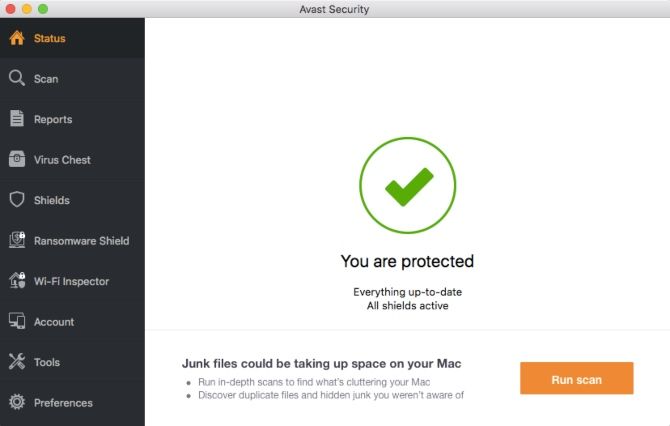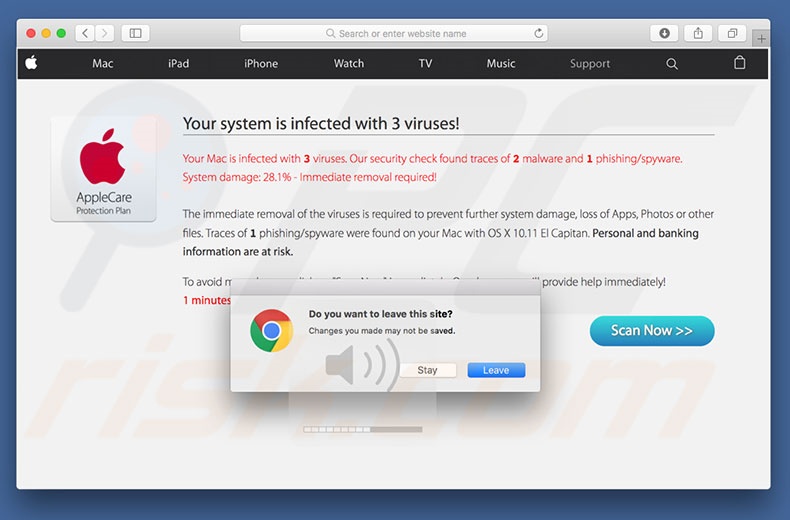

Free games for mac download. Mar 12, 2019 A good start to scan your Mac for viruses is to see whether you have applications installed that you don’t recognize: Go to the Applications folder via Go Applications in Finder or using the shortcut Shift + Command + A.
There are several steps you can take to get rid of a virus on an infected Mac computer and get it back up to speed.If you've identified which programs on your Mac are malicious, you can use the Activity Monitor to check for and remove any malware that may be active.Stopping a virus altogether involves searching your Mac pretty thoroughly to ensure all traces of the virus are gone. You should use malware-scanning software to help identify and eliminate viruses. Visit Business Insider's homepage for more stories.We all know the signs: Sudden reboots. Frozen screens. Pop-ups that just won't stop. Mysterious extensions showing up in your browser. Getting a virus on your Mac is never fun, especially when it starts interfering with your computer's performance. But there are ways to stop it in its tracks and get rid of it. And, perhaps best of all, those methods are free. To help identify malicious programs, you should consider first using malware-detection software like Clean My Mac X or Malwearbytes to scan your computer. Once you've identified likely sources of infection, there are a few ways you could go about manually removing programs or extensions to help get your Mac back up to speed.Check out the products used in this article: MacBook Air (From $1,199 at Apple)How to get rid of a virus on a MacStop malicious programs from running on your Mac1. Go to your Launchpad (the rocket ship icon in your bottom toolbar).2. Search for the activity monitor and click to open it. It may be located by default in a folder labeled 'Other.'3. If you know which programs are malicious, find them in the CPU tab of your activity monitor and stop them from running by clicking the 'x' in the top-left area of the window.Uninstall bad apps1. Open your Finder.2. Toggle over to 'Applications.'3. Look for any apps you don't recognize, or any that have exhibited malicious behavior (e.g. opening unprompted and unexpectedly).4. Drag any such apps to the Trash icon (located in the bottom toolbar of your screen).5. Empty the trash by clicking on the icon and selecting 'Empty' (located in the top-right corner of the window).Get rid of any virus-related browser extensionsSafari1. Launch the browser.2. In the top toolbar, click 'Safari' and then 'Safari Extensions.'3. Look for suspicious extensions and uninstall those.Chrome1. Launch the browser.2. Click the three stacked dots in the top-right corner of the screen.3. Hover over 'More Tools' and then click 'Extensions.'4. Look through your extensions and 'Remove' any you don't recognize.Firefox1. Launch the browser.2. In the top-right corner, click the three vertical lines and choose 'Add Ons.'3. Toggle over to the extensions tab and get rid of any that you aren't familiar with.You may also want to change your browser's homepage and search engine preferences if the virus has impacted those areas.Get rid of login items you didn't opt forThis is another area where viruses can hide within your Mac. Here's how to find yours and get rid of any extra ones:1. Click the Apple icon in the top-left corner of the screen and then select 'System Preferences.'2. Tap 'Users & Groups' and toggle over to 'Login Items.'3. Untick the box next to any login items that you don't recognize.Other steps you can take to get rid of a virus on a MacEven if you go through all of the above steps, it's still a good idea to once again run a malware-detection software like Clean My Mac X or Malwearbytes — both are free and will give you peace of mind when it comes to your computer's health.If you're still worried about having a virus, you may want to create a new user profile on your Mac. Many viruses are user-specific, rather than device-specific.For those who use Time Machine, one other thing to consider is restoring an old version of your computer to wipe out all traces of the virus. It's relatively quick and easy, but you'll lose any changes that have been made since the last backup.And, as a last resort (or for those who have access to Apple's technical support), calling in a professional can be a good idea.How to avoid getting another virus on your MacBe sure to look out for virus-friendly websites and files, and avoid them by doing things like leaving spam emails unopened and only downloading from trusted, known sourcesInstalling a security system on your Mac is also a good idea to prevent malware from infecting your computer in the future. Another positive step to take is keeping your Mac updated, so that new software patches can be applied, leaving your computer less vulnerable to bad characters. And, as always, be sure to back up your Mac so that, even in the event of a virus, your data and media are protected.Related coverage from How To Do Everything: Tech:Can iPhones get viruses? Here's what you need to knowHow to diagnose and remove any virus from your iPhoneCan iPads get viruses? Here's what you need to knowHow to free up space on a Mac computer that's running out of storageHere is a guide on how to detect Mac malware and safely remove it from your computer.
Malware is a malicious piece of software that is intended to harm your files or overall system. Mac computers are definitely susceptible to Malware infection and it is a good idea to occasionally check for it especially if you are experiencing strange behavior.

Malware indicators include continuous pop-ups, changes in browser’s homepage, running out of hard disk space quickly, unwanted toolbar items or add-ons and more. These are all typical behaviors of a computer infected with malware and should be addressed immediately.
How to Check For and Remove Mac Malware
Here are the steps to check for malware infection on your Mac and remove it if found.
Users can optionally set Google Translate to automatically translate Web pages not in their default language without prompting, which is handy to have if, for example, you're reading a foreign newspaper and want to view multiple articles and have them translated as soon as they load. Google translate app for mac. Translating couldn't be easier; users simply select the desired output language-there are 42 to choose from-and the page is translated within a few seconds. We especially like that the translated text appears right on the Web page, leaving the page's formatting intact; it's exactly like reading the original page, but in the language of your choice.
Watch the above video for a guide on how to remove Mac Malware from your machine.
How to Run Malwarebytes Utility
There are fortunately a couple of different programs available to users that believe they have been infected with a malicious program. My recommendation is the Malwarebytes. This is a free third-party program that I have used to great success in cleaning out my machine as well as friends and family.
Malwarebytes is a free program available for Mac and PC from malwarebytes.com and will download as a .dmg installer package. Install the application by dragging it to your Applications folder (or open it from the installer if you do not want to have it on your machine).
Click the Scan icon then once the application opens and it will begin to perform a scan of your Mac. Fortunately the scan only takes a fewmoments depending on your hard drive size and will quickly inform you if you have any Malware to remove. If you have malware, the program should be able to remove what is there.
Code generation will treat parfor-loops as for-loops. Fortran compilers are supported with Simulink only for creating Simulink S-Functions using the MATLAB MEX command. C++ compiler for mac. This compiler does not support OpenMP.
If you are not able to get your problem resolved, the program will look have steps for what you should do next. They link to a supportarticle on their website which has plenty of helpful troubleshooting steps for what to do including steps from a simple restart to potential hardware issues.
How To Check For Viruses On Mac Desktop
In my experience, if you want to ensure you are completely clean of any malicious software, you should backupimportantfiles and erase and re-install your MacOS to the newest version. This is definitely a more extreme approach and would only be advised if you are not able to clean the machine using Mawarebytes or something similar.
How To Check For Viruses On Macbook Pro
It is a great idea to always have a databackup going for important files or ensure that they are syncing to a Cloud storage opportunity. In this day and age where Mac computers are now becoming more susceptible to attacks, keepingconfidentialdatasafe is more important than ever.
Related Posts
How To Check For Viruses On Mac 2019
Here is a guide on how to remote access a Mac from another computer to get…
Here is a guide on how to create a bootable external Mac hard drive to run…
With recent updates to the Mac's OS X El Capitan, and the new iOS 9.3,…